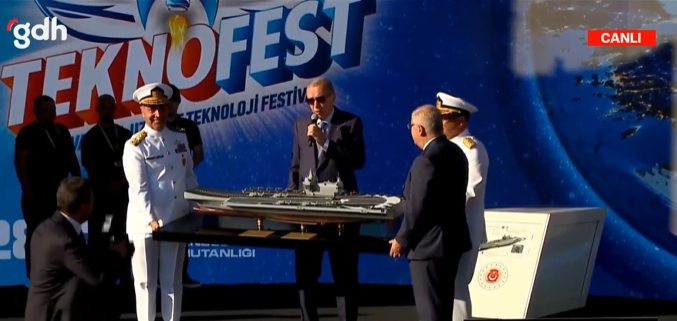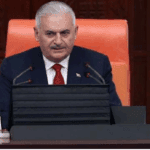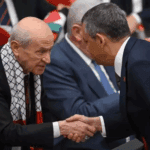The viral scene at İstanbul Naval Shipyard—Defense Minister (and former chief of staff) Yaşar Güler and Navy Commander Adm. Ercüment Tatlıoğlu carrying a scale model of the planned MUGEM aircraft carrier while President Recep Tayyip Erdoğan spoke—wasn’t just awkward stagecraft. It was a window into how power now signals itself in Turkey: through personal display rather than institutional distance.
This matters because ceremony is never neutral. Who lifts, who stands, who gestures—these are choices that teach the public where authority lives. When the defense minister and the navy chief become the literal bearers of a prop, the message is not technological pride but political deference. It reduces uniforms from symbols of professional competence to instruments of spectacle.
Supporters will say it’s harmless showmanship for a marquee program. But the cost of such “harmless” moments adds up. When visibility before the leader becomes its own currency, three corrosions follow. First, promotions start to reward performance of loyalty over performance of duty. Second, procurement decisions drift toward what photographs well rather than what survives combat. Third, candor withers; officers learn to curate truths that flatter, not findings that fix.
The timing makes the optics even worse. Güler’s personal attorney, İsmet Sayhan, a former chair of the state-owned MKE, was recently detained and subsequently jailed in a large-scale investigation into alleged organized crime and espionage. Critics contend Güler helped him ascend to MKE and speculate the minister could be sidelined if the investigation widens.
The most revealing beat was small but decisive. As Güler gripped the model, the admiral standing beside him stepped forward, clearly offering to take it—and Güler wouldn’t let go. Against that backdrop, Güler’s insistence on carrying the model reads less like enthusiasm and more like insurance: a public pledge of loyalty at a precarious moment. Even if none of the speculation comes to pass, the performance still taught the wrong lesson about what senior officers are there to do.
There’s a deeper irony. The “Blue Homeland” doctrine and the promise of a domestically designed carrier require exactly the opposite culture: quiet rigor, disciplined testing, and procurement insulated from political theater. Deterrence is built in shipyards and classrooms long before it appears in parades. A navy that spends capital on optics risks losing credibility with allies and adversaries alike. The people who most need convincing—budget committees, warfighters, and foreign partners—are the least impressed by leader-centric displays.
Turkey has been here before, in reverse. For decades the military’s overreach stunted democratic life. The post-2016 restructuring rightly cemented civilian supremacy, but supremacy is not the same as personalism. Civilian control is strongest when it is institutional—laws, committees, audits, doctrine—not when it is enacted as court ritual. A republic does not need its top brass to carry symbols for its leader; it needs them to carry responsibilities the public can verify and critics can test.
What would professionalism look like? Start with protocol: senior officers don’t handle props; engineers, crews, or junior officers do. Put parliament back in the frame: real oversight of budgets and acquisitions instead of rollouts tailored to presidential talking points. Re-center promotions and professional military education on candid after-action review and operational excellence, not television clips. And separate party messaging from military ceremony, full stop.
Defenders of the Teknofest tableau will accuse critics of overreading a moment. But moments are how norms migrate. The longer Turkey normalizes leader-centric pageantry as the standard of civil–military “partnership,” the more brittle its institutions will become. If the goal is a modern navy and a credible defense industry, the path runs through rules, not rituals. Professionalism is quiet, unglamorous, and never confused with carrying a model ship on stage.
In the end, the Teknofest tableau was not just a curiosity but a case study in what might be called the Erdottoman style of rule: a fusion of neo-Ottoman pageantry and Erdoğan-era personalization of power. The Ottomans used ceremony to exalt the state above the individual; Erdoğan uses ceremony to fuse the state with himself.
By: News About Turkey (NAT)



